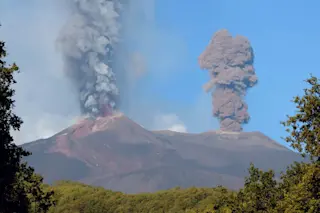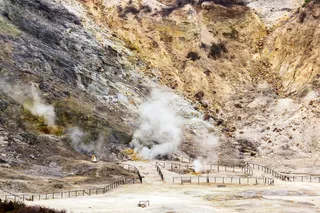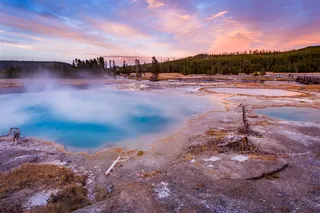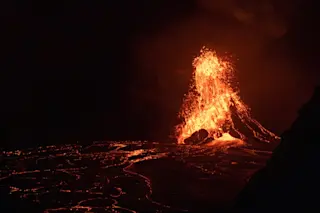Etna in Italy erupting from two vents simultaneously on October 26, 2013. Image: Dr. Boris Behncke / Flickr. Sometimes it takes as many days as the meeting to catch back up afterwards -- which is clearly the case for me after GSA this year. Finally getting almost on track as we hurtle into November. Volcano news! Italy So, like clockwork, right as I leave for Denver and the GSA meeting, a volcano decides to put on a show. This time it was Etna. After six months of relative quiet, the Sicilian volcano put on quite an impressive show (see above), with eruptions from two craters simultaneously: the New Southeast Crater and the Northeast Crater (see above). Both of these eruptions were explosive, producing plumes that reached a few kilometers over the volcano and spread ash across the area of eastern Sicily. At the same time, a lava flow issued from ...
Eruption Update for November 5, 2013: Etna and Sinabung
The Etna volcano eruption on October 26 showcased explosive activity from multiple craters, thrilling observers in Sicily.
More on Discover
Stay Curious
SubscribeTo The Magazine
Save up to 40% off the cover price when you subscribe to Discover magazine.
Subscribe













